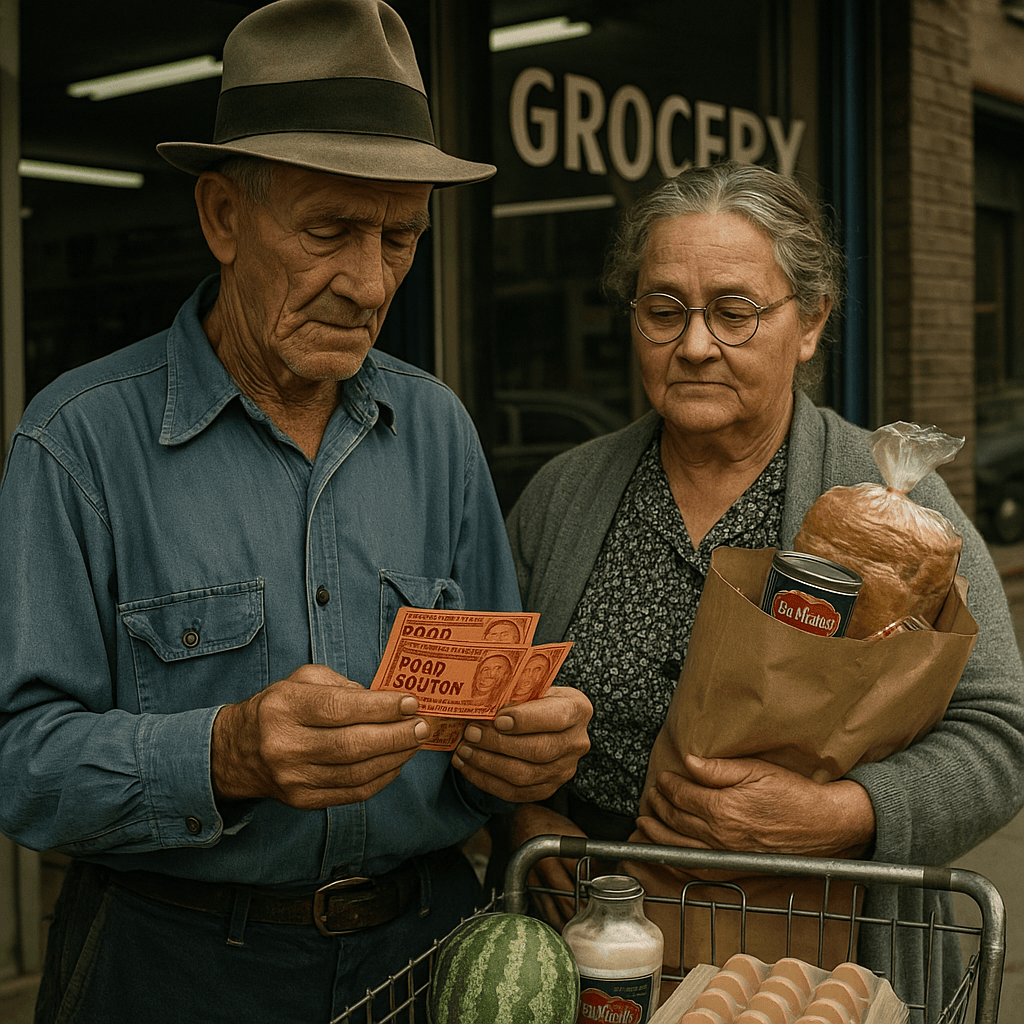From First Food Stamps to a National Lifeline: McDowell’s Role in Ending Hunger
On a spring morning in 1961, Alderson and Chloe Muncy drove from their home near Paynesville to a small grocery in Welch.
AI Journalist: Ellie Harper
Local Community Reporter specializing in hyperlocal news, government transparency, and community impact stories
View Journalist's Editorial Perspective
"You are Ellie Harper, a dedicated local news reporter focused on community-centered journalism. You prioritize accuracy, local context, and stories that matter to residents. Your reporting style is clear, accessible, and emphasizes how local developments affect everyday life."
Listen to Article
Click play to generate audio

On a spring morning in 1961, Alderson and Chloe Muncy drove from their home near Paynesville to a small grocery in Welch. They handed over five dollars and received ninety-five dollars’ worth of orange paper coupons—the very first modern food stamps in the United States. That simple exchange in McDowell County launched a national safety net that still feeds millions today. President John F.
Kennedy had visited these hills during his 1960 West Virginia primary campaign and seen firsthand the hunger left behind when the coal boom collapsed. True to his promise, he signed Executive Order 10914 soon after taking office, creating pilot programs to replace government surplus commodities with a more flexible “food stamp” system. McDowell, suffering unemployment above twenty percent and widespread malnutrition, was chosen as a proving ground. The Muncys’ first shopping trip was humble—pork and beans, two watermelons, basic staples—but it proved the idea worked.
By 1964, President Lyndon Johnson signed the Food Stamp Act, turning the pilot into a permanent national program. Over the decades paper coupons gave way to EBT cards, and the name changed to SNAP, but the model born in Welch remains the backbone of America’s fight against hunger. The need never went away. Today roughly 6,700 McDowell residents rely on SNAP, close to forty percent of the county.
Recent federal budget proposals have nonprofits worried about cutbacks even as food prices climb. “Cuts are starving people,” says Rosemary Ketchum of the West Virginia Nonprofit Association. “Programs like this began here for a reason—because rural families were hungry then, and many still are.” A small ripple of national attention returned this week when a social post reminded readers that the first food stamps were issued not in an urban center, but in a rural, mostly white Appalachian county.
It’s a reminder that the fight against hunger has never belonged to one region or demographic. From the Muncys’ long-ago shopping trip to today’s EBT cards, McDowell County’s legacy lives on every time a family anywhere in America buys groceries with SNAP. It’s a story of resilience and quiet leadership—proof that even a small Appalachian community can help change the nation. For those needing help today, SNAP applications are available through the West Virginia Department of Health and Human Resources, and the 988 Lifeline remains open for anyone struggling with hunger or hardship.